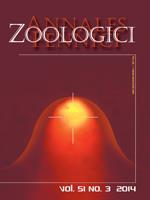Studies on the mechanisms of speciation and maintenance of lineages have paid great attention to hybridization between species because this process is considered an important source of variability and evolution. In recent years, the use of molecular markers has provided more detailed information on the distribution and magnitude of hybridization in natural populations. Here we present a phylogenetic analysis using one mitochondrial and one nuclear DNA segment as molecular markers in two closely related lizard species, Tupinambis merianae and T. rufescens, which are present in a continuous area including allopatric and sympatric populations. Consensus trees obtained with the mitochondrial gene showed two well-supported clades. Some individuals clustered with one of the species in the tree obtained with mitochondrial DNA, and with the other species in the tree recovered using the nuclear gene, demonstrating the occurrence of hybridization between these species. Hybrid individuals were captured in the area of sympatry, suggesting the existence of a hybrid zone in the contact area of the distribution ranges of these two lizards, which corresponds to the ecotone between Dry Chaco and Espinal. This work presents the first evidence of natural hybridization within the genus Tupinambis.
How to translate text using browser tools
1 June 2014
Natural Hybridization in Lizards of the Genus Tupinambis (Teiidae) in the Southernmost Contact Zone of their Distribution Range
Imanol Cabaña,
Cristina N. Gardenal,
Margarita Chiaraviglio,
Paula C. Rivera
ACCESS THE FULL ARTICLE
<
Previous Article
|

Annales Zoologici Fennici
Vol. 51 • No. 3
June 2014
Vol. 51 • No. 3
June 2014




